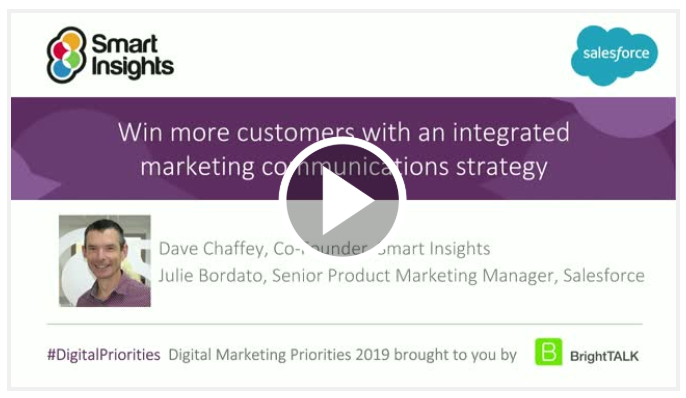Think about your buyer journey today – versus just a few years ago – and it’s probably a much longer complicated affair, with more steps and opportunities to capture data.
That’s a daunting prospect, but it’s also great news for sales and marketing teams – provided they have an effective strategy in place to combine marketing communications and automation.
Not quite there yet? Help is at hand. In partnership with Smart Insights, we’ve created a report titled ‘Win more customers with an integrated marketing communications and automation strategy.’
It’s a must-read for business owners, CMOs, marketing and sales directors and managers, as well as marketing technologists like CIOs who are responsible for integrating their marketing applications and data.
Download the guide for the full deep-dive or read on for a quick overview.
Delivering on the promise of automation
To master those increasingly complicated buyer journeys, brands need to find a way to manage personalised interactions at scale. Marketing automation to the rescue – but it’s not an easy win.
As the report will tell you, 80% of companies believe they deliver “superior experiences” but only 8% of customers agree. Think about that for a second. That’s a huge gap in perception, and one that needs to be closed fast.
To do it, you need a defined and integrated strategy that combines marketing communications and automation. And the three most important factors that will help you maximize response rates throughout the buyer journey are as follows:
- Content strategy – to maximize engagement and audience time-to-value
- Layered segmentation and targeting strategy – to boost audience relevance and response
- Contact strategy – to combine content, targeting with the right cadence to automate marketing communications and improve sales cadence
Breaking it down
The guide will walk you through a framework for action and practical tips. It covers content mapping, segmentation and targeting, sales and marketing alignment, and supporting Artificial Intelligence and creative optimisation.
Questions to ask yourself
To give you a taster, here’s a list of questions to consider as you make your way through: defining your opportunity, setting your engagement strategy, to finally implementing your plan.
Step 1: Define your opportunity
Is the gap analysis showing improved opportunities for increasing microconversions?
Have you modelled the cost benefit of improving content effectiveness?
Have you reviewed how to improve marketing and sales alignment?
Do you have integrated technologies in place to implement engagement strategy?
Step 2: Set your engagement strategy
Do you have a layered targeting approach to deliver relevance?
Do you have relevant top, middle, and bottom-of-funnel content for prospect nurturing?
Have you defined a comprehensive marketing and sales automation sequence to maximize conversion?
Step 3: Implement your action plan
Are you using 90-day planning to phase implementation and make optimization?
Do you have a process in place to optimize targeting, frequency and creative?
Are you using AI to improve communications relevance and response?
Get started
Don’t worry if you don’t have all the answers today. Rather, see these questions in context, and start answering them as you build out your integrated marketing and automation strategy.
Read the full guide now: Win more customers with an integrated marketing communications and automation strategy.
Hear from the experts
Tune in and hear Smart Insights’ Dr Dave Chaffey (author of the guide) and Julie Bordato of Salesforce break down everything you need to know about building your integrated marketing communications and automation strategy. Access the webinar here.








